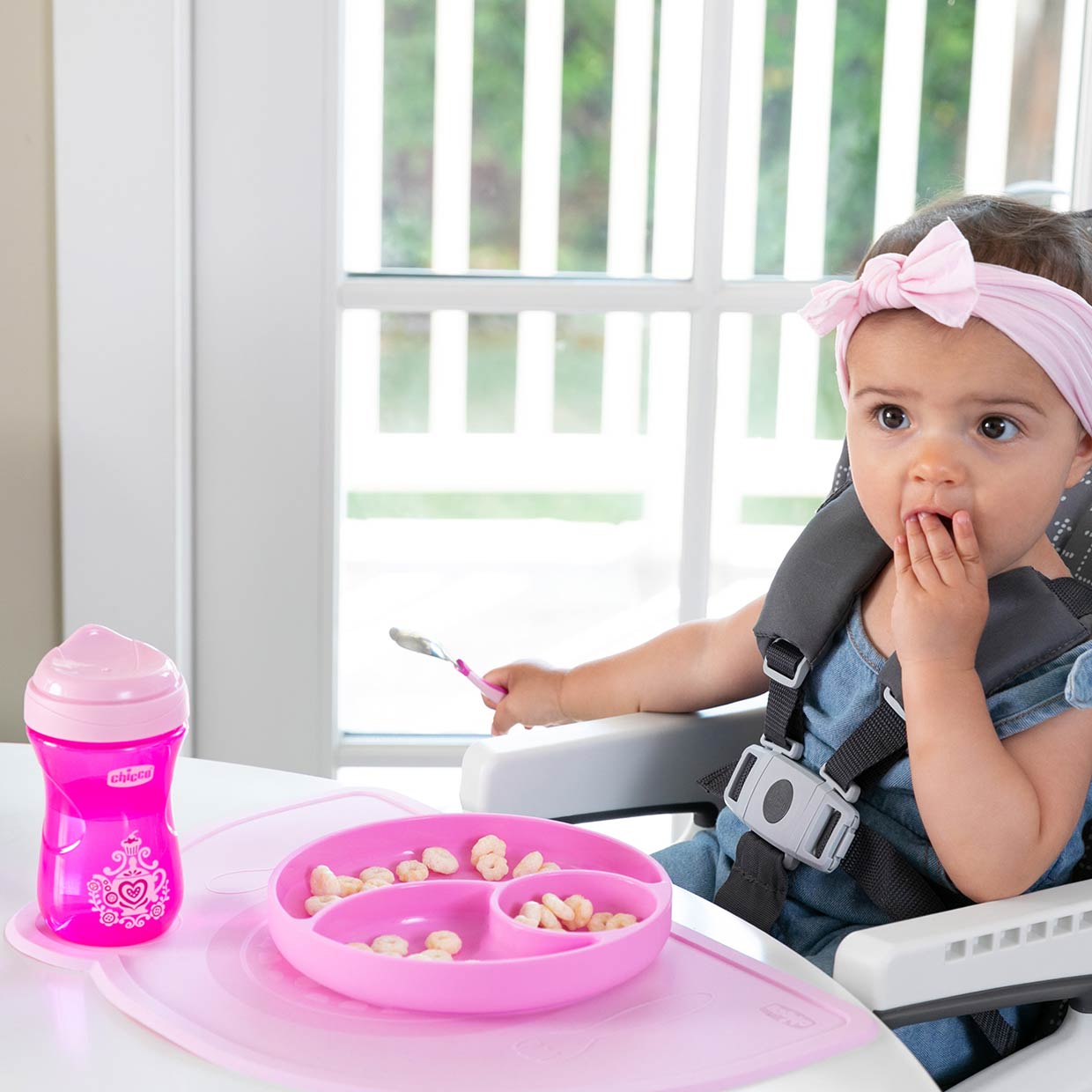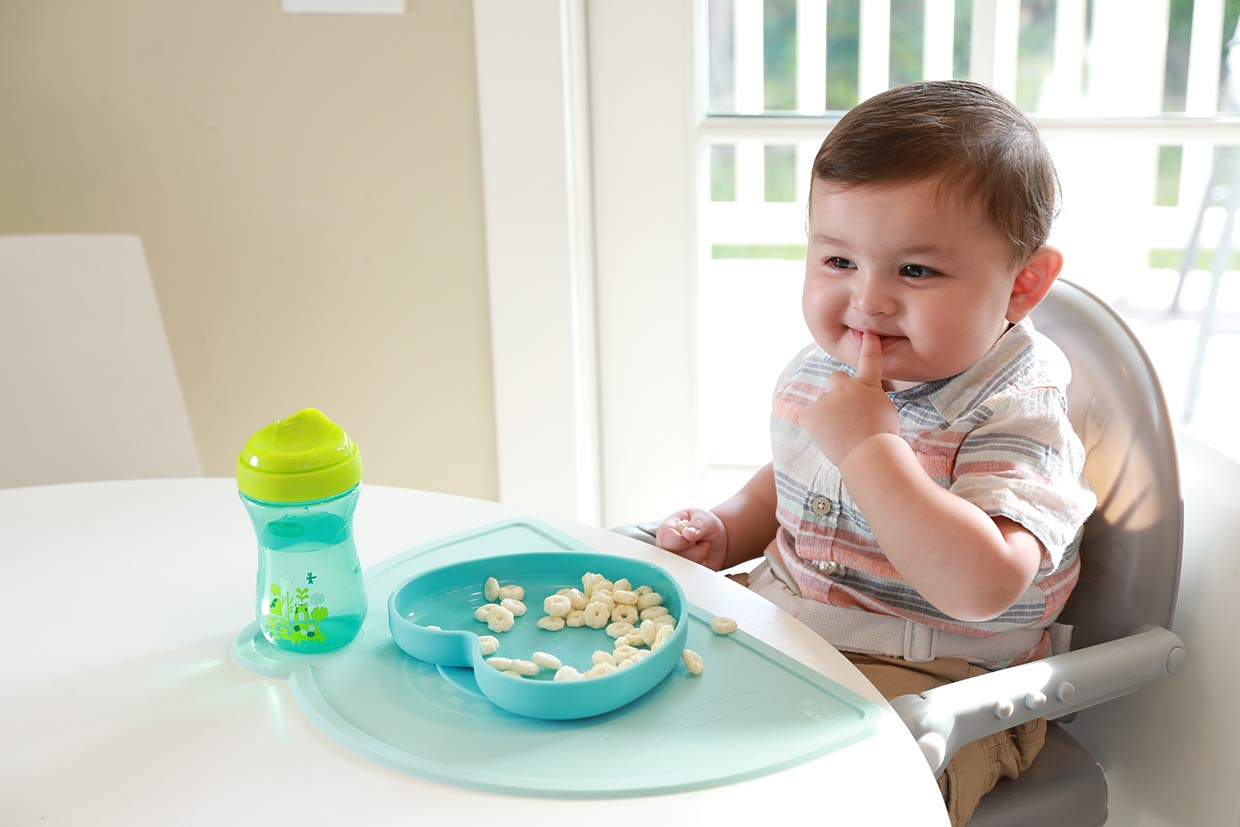
You may be used to calling all the shots as a parent, but when it comes to introducing solids to your little one, some parents are letting their baby lead the way! Baby-led weaning (BLW) is a method that involves introducing age-appropriate solid finger foods to your little one and allows your baby to take charge of their own feeding journey.
BLW encourages your little one to explore and engage with solid foods through touching, tasting, squishing, and self-feeding. By empowering babies to explore and make choices, baby-led weaning promotes independence, fine motor skills development, and eating at the table as a family. This guide will explain what baby-led weaning is, its benefits, how to implement it, and much more!
BLW is a feeding approach that involves skipping pureed baby food and introducing solid finger foods to your baby, typically around the age of 6 months. With BLW, your baby has the opportunity to feed themselves and determine their own intake, allowing them to explore a variety of textures and flavors at their own pace. Babies with developmental delays or disabilities may face challenges with self-feeding and may require alternative approaches tailored to their specific needs.
Curious if baby-led weaning is the right approach for your little one? Check out some of the benefits of BLW below:
- Encourages Independence: With BLW, your baby is learning to self-feed. This allows them to explore and touch food — plus, what’s cuter than a baby smiling after biting into a sweet piece of fruit for the first time?
- Promotes Fine Motor Skills: Your baby needs to grasp pieces of food and bring them to their mouth. This promotes hand-eye coordination, dexterity, and muscle strength.
- Invites Your Baby to Eat With the Family: You can secure your baby in their high chair so they can be part of family meals right away. Instead of going through the hassle of preparing a separate pureed meal, BLW allows you to offer your baby a portion of what you're having for dinner, provided it is safe and suitable for their age and development.
- Your Baby Can Learn How to Chew: Baby-led weaning plays a crucial role in helping your little one develop important oral skills, including chewing and swallowing. As babies typically begin teething around 6 months of age, they may rely on their gums to effectively break down softer foods during this exploration phase before their baby teeth grow in.
Most babies are developmentally ready for solid foods around 6 months of age, however, your baby should meet certain milestones like having good head and neck control and being able to sit up in a high chair without support. They should also demonstrate strong chewing skills, such as the ability to move food to the back of their throat and swallow effectively. If you “helicopter” food into their mouth and it just dribbles down their chin, then that’s a sign they’re not ready to embark on solids yet.
It’s also important to remember that breast milk or formula will still be their primary source of nutrition, as your baby won’t jump from trying solids to three square meals a day overnight. The AAP recommends that your baby weigh around 13 pounds or more before starting solid foods. You should consult with your pediatrician to ensure that the timing and introduction of solids align with your baby's unique developmental needs.
If your baby has achieved the proper developmental milestones to try solids, then you’re ready to start your BLW adventure! You can place your baby in their high chair for a safe feeding environment and offer them a small amount of food on a spoon or atop their placemat. You can also introduce very small amounts of water in a sippy cup.
Give your baby the freedom to decide how much they want to eat and respect their cues. If they indicate they are done or want to get out of their high chair, avoid forcing them to continue eating.
Baby-Led Weaning Foods to Try
While you might want to raid your fridge and cabinets and lay a variety of food in front of your little one to test out, it’s important to remember that not just any food will do.
- Soft Foods: Choose soft foods that are easy to chew and avoid any hard, crunchy, hot, sticky, or slippery foods.
- Iron-Rich Foods: Opt for iron-rich foods to support your baby's nutritional needs like steamed carrots.
- Focus on Texture: Pay attention to texture, ensuring that foods are easy to smash between their fingers. You can steam vegetables or bake fruits before giving them to your baby. Think baked apples without the skin.
- Try a Variety of Foods: Your baby may be a picky eater. Introduce a variety of baby-friendly foods like bananas, broccoli, avocado, mango, sweet potato, baby corn, chicken, meatballs, breadsticks, or thicker pasta (of course, not all at once).
Safe Portion Sizes
When introducing solid foods to your baby, it's important to consider their developmental abilities. At around 6 months old, most babies may not have the fine motor skills to pinch small pieces of food effectively. To accommodate their grasp, it's recommended to slice food into strips, providing something they can hold in their hand and enjoy.
Cut larger chunks of avocado, mango, baked apples, and other soft fruits. Similarly, cut zucchini, sweet potato, broccoli, and similar vegetables into finger-sized sticks, allowing your baby to hold and nibble without the risk of putting the whole piece in their mouth. For meats like meatballs and chicken, it's advisable to slice them in half or give them chunky strips.
As your baby nears 9 months of age, their ability to pinch food improves, making it an ideal time to introduce cereals or cut other foods into bite-sized pieces for them to explore and try.

Gagging is a normal reflex that often occurs as your baby begins to explore and adapt to eating finger foods. However, it is crucial to differentiate between gagging and choking, as choking involves an obstruction in the baby's airway and requires immediate attention. Signs of choking may include the inability to cry, the face turning blue, a toddler grabbing their throat, fear evident on your baby's face, or the chest not moving up or down.
Seeing your baby choke can be a terrifying experience for any parent, but you’ll need to remain calm and act swiftly. The AAP advises shouting for help, initiating rescue efforts, and having someone else call 911. For detailed safety protocols regarding choking and instructions on performing CPR, refer to the AAP First Aid Guide for Parents and Caregivers.
If it’s your first time trying out baby-led weaning, keep the following in mind:
- Expect Your Baby to Make a Mess: Babies are notoriously messy. You can put newspapers or a floor mat on the ground. Try wearing an apron to keep yourself clean and placing a bib on your baby to keep their clothing clean in between bites.
- Expect Your Baby to Gag: Gagging is normal as your baby tries new foods. It can be unsettling to hear, but gagging will help to prevent your baby from choking.
- Baby-Led Weaning Isn’t for Every Baby: Every baby is different and there’s no reason to feel bad if your baby prefers baby food over solids. In time, they’ll get there.
Journeying into the world of BLW can be a big step for both parents and babies, but it’s crucial to follow these safety tips and more:
- Always supervise your baby during mealtimes
- Don’t serve foods that are too hard like nuts or candy
- Learn and practice CPR for infants
- If your baby gags, don’t start panicking. Your baby will sense this so stay calm.
Trying out the baby-led weaning method is an exciting aspect of parenting. Ensure your baby has met the appropriate milestones, opt for soft foods, and allow your baby to go at their own pace. Before you know it, your baby will be handling solids like a champ! You can visit our parenting blog for more tips and advice.
